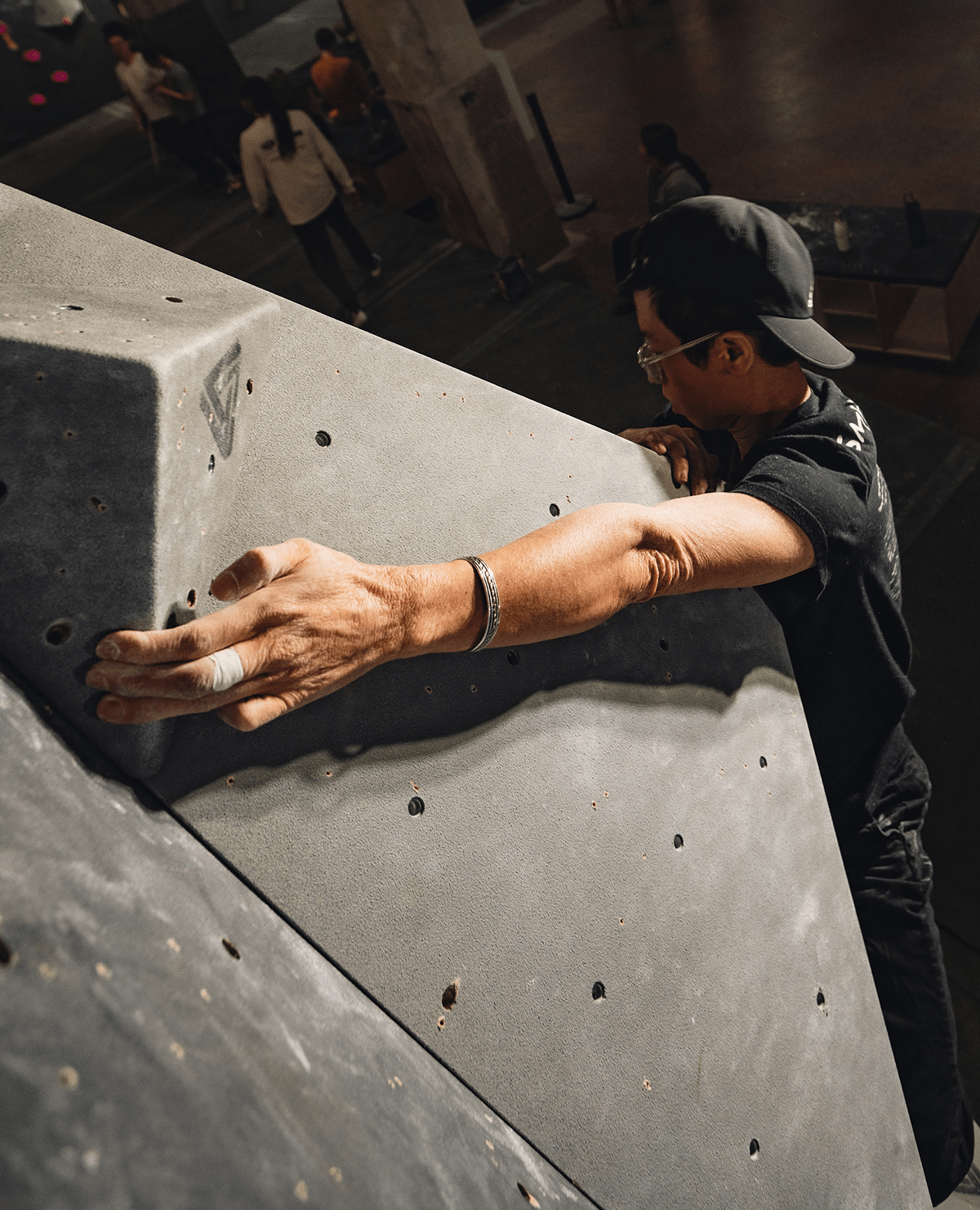Hangboarding—either you hate it or you love it. Some climbers swear by it and say they couldn’t climb like they do today without the hangboard, while others, such as Olympic gold medalist and World Cup crusher Janja Garnbret, say they don’t even use it!
Whether or not the hangboard should be part of your routine is up for debate. Only you can make that choice. There is evidence that it increases your finger strength and can help you climb harder; yet, there is also Janja Garnbret’s word…
Anyhow, we’re not here to debate if hangboarding is useful; instead, we’re here to give you the top three finger training exercises to improve your finger strength. If you’re somebody looking to get over a plateau and break into that next grade range and think that stronger fingers will help, then this is for you.

When You Should Finger Train
Or rather, when you shouldn’t finger train. Hangboarding should be reserved for those who have a solid climbing background (or any background that has increased their finger strength over time). Your fingers are made up of tendons and ligaments, and not necessarily the same type of muscle as your bicep or quad. Tendons and ligaments take much longer to strengthen, so finger training is really only recommended to those who have been putting stress on their fingers for quite some time already.
For absolute beginners, prioritize climbing on crimps to improve your finger strength. Simply climbing crimpy routes will do wonders.
However, you know your body best, right? If you are certain you want to start finger training before a general recommendation, then by all means. The best thing you can do is to take it slow and avoid climbing for a day or two after an intense hang session. Just make sure you use proper hangboard technique, or you could set yourself back for weeks!
How Many Hangboarding Workouts to Do Each Week
This answer will largely depend on how often you climb throughout the week. Are you a ritualistic three-day-a-week climber? Do you have a set schedule of at least two days you make it to the gym?
Look, the more you climb, the fewer hangboard workouts you should perform when you’re just starting. When we say finger training is stressful on your fingers, we’re not kidding. Nobody wants to get hurt on the hangboard.
A good rule of thumb is to aim to have at least one full rest day after your hangboard workout. If you can’t help it and must climb the next day, try to use other holds besides crimps. Pull on pinches or slopers and work that contact strength!
Top Three Finger Training Exercises
The meat and potatoes; why you’re here. Let’s take a look at the top three finger training exercises you can do to improve your finger strength and help you climb harder this season.
Before any exercise, especially finger training, warm up thoroughly to reduce the risk of injury. Injury is still possible, of course, but we want to make sure we’re doing all we can to keep climbing.
5 sets of hangs on five different holds. That’s the bread and butter.
Long Duration: Hold on for 30-60 seconds at a time and rest for 1-2 minutes.
Long-duration hangs emulate the sustained grip required for climbing long routes. It will increase your finger endurance and help you build stamina.
Max Hangs: Hold on to the most challenging edge for 7-10 seconds and rest for 1-2 minutes.
Max hangs test your grip and improve your strength on the smallest edge, or the slopiest sloper, or the tiniest pocket. If your fingers are pretty sore, then give yourself some extra time between reps.
Repeaters: Hang for 7 seconds, rest for 3, hang for 7 seconds, and so forth.
Aim to complete a round of repeaters lasting at least a minute. If you can, aim for three minutes to really put your fingers to the test. This exercise mimics the experience of gripping a hold, then reaching for and grabbing another one.
How Many Finger Training Exercises Each Session?
You likely won’t want to perform all three exercises during your hangboarding session. You should evaluate what you most want to gain from finger training, i.e., what aligns most with your climbing goals, and choose one of these exercises to focus on.
For example, perform repeaters if you want to increase your finger strength on smaller holds. Or, start with long-duration exercises or max hangs if your fingers are too tired to finish your project.
How you structure your finger training program is up to you. You can always back off the edge you’re training on and move to a larger one with better hangboard technique, or even cut your workout short for the day. Listen to your body as you progress through hangboarding and be patient; finger strength doesn’t come overnight.
Climb Strong, Climb Safe
Climbing is an inherently dangerous activity; we love it. The stronger you make your fingers, the harder climbs you can attempt. Just remember that finger strength is a byproduct of training hard and being consistent, but climbing hard doesn’t directly correlate with insane finger strength.
Technique, flexibility, and other muscle groups play a large role in your ability to climb stronger. Make sure that even though you’re focusing on improving your finger strength, you aren’t neglecting the rest of your body.
Climb hard, have fun, and climb safe!
